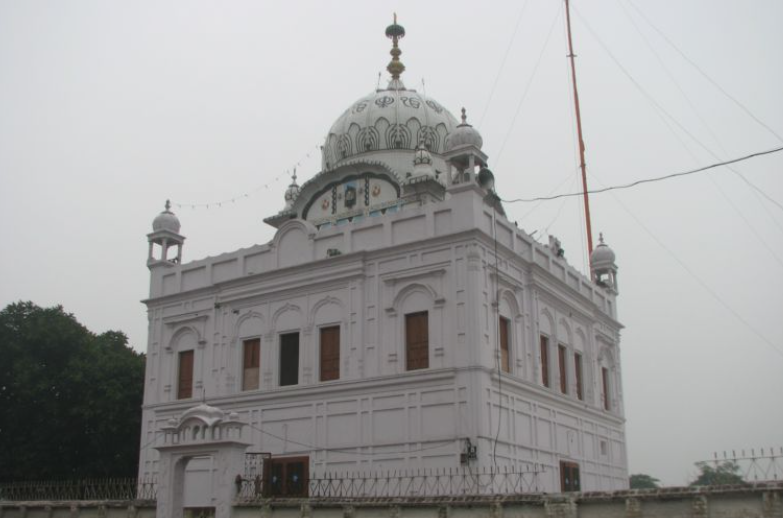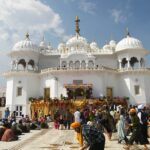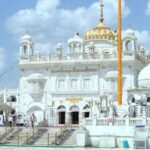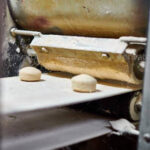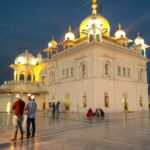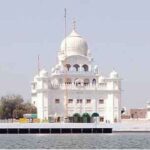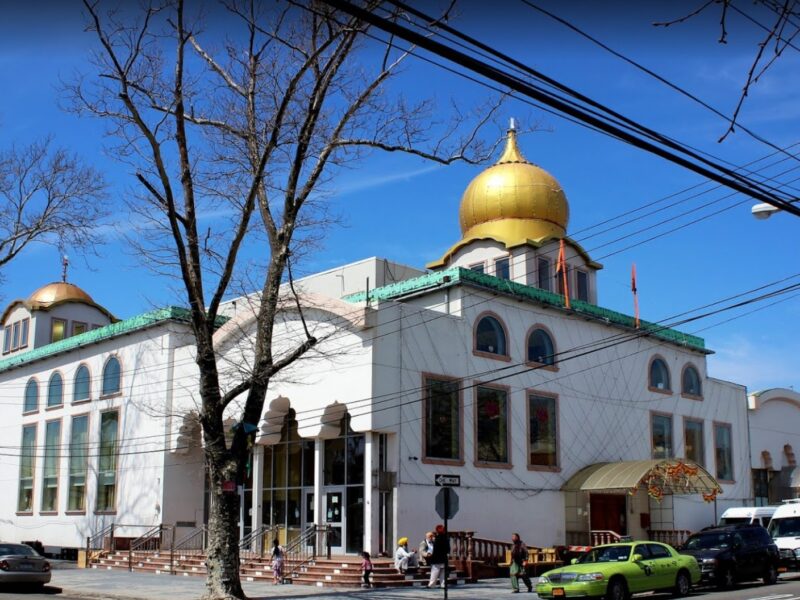Sri Arjun Dev Ji, the fifth Guru, established Kartarpur in the Jalandhar province. In 1598, he went to Kartarpur and planted his walking staff in the ground, declaring, “This shall be the foundation of our faith.” Under his supervision and assistance, the community grew quickly and is now a significant town. The pilgrims are still shown Guru Arjun’s stick. Tham is a substantial piece of sandalwood. Gurdwara ‘Tham Sahib’ is the name of this shrine.
In 1833, Maharaja Ranjit Singh gave a donation of one and a 1/4 lakh rupees for the construction of the beautiful edifice renowned as the “Thamji,” which houses this stick. He also set aside the money from Fatehpur village in the Amritsar district for the institution’s upkeep. It is now a famous pilgrimage destination for people of many faiths. Guru Arjun Dev dug a well near the shrine, which he named Gangsar.
It is reported that water from the Ganga flows through an underground passage into it. This was developed during the Guru’s presence. After visiting Hardwar, one of his followers said that he had ‘lost his brass Lota in the Ganga while bathing.’ “Don’t worry about it,” the Guru said, “because you’ll find it here in the Gangsar.”
“Amid a big crowd of disciples, the half-believing believer let himself dive into the well by a rope and arose full of pleasure, holding the Lota in his hand.” Since that day, visitors have been able to freely immerse in the well’s holy water.
The settlement of Kartarpur was also blessed by the visit of Sri Hargobind, the sixth Sikh Guru, who waged his fourth war against the Mughals near this location in May 1634. Pendle Khan, who had lived his entire life eating from the Guru’s hands, switched sides and joined forces with a large Mughal army to fight the Guru.
The Guru’s army battled with such zeal and bravery that the adversaries were unable to stand up to them. The army’s leader, Kale Khan, was apprehended, and his troops fled. Pendle Khan, the traitor, paid the ultimate price and died in combat. It was Guru Hargobind’s final struggle.
Sikhs see Kartarpur as a holy spot since it was here that the ninth Guru, Sri Tegh Bahadur, was wedded. The location of the wedding ceremony is marked with a tiny memorial. This settlement is located on the Shershah Suri Marg, which connects Jalandhar and Amritsar. It’s only 20 kilometers south of Jalandhar. Rail and vehicle connections are excellent. Also, the airport is around 50km away so visiting this gurudwara is not at all going to be confusing or tough.
Kartarpur, which signifies ‘Town/ City of God,’ is a hamlet in the Doaba zone of Punjab, situated close to Jalandhar. Sri Guru Arjan Sahib Ji established it. Kartarpur (in Jalandhar) is not Sri Guru Nanak Sahib Ji’s Kartarpur (which is now across the Pakistan border opposite Dera Baba Nanak). Although the names are quite similar these two are completely distinctive from each other. Another Kartarpur Sahib is located in Pakistan but you can now visit it in Pakistan as well as they have opened the corridor for Indian devotees of Guru Nanak dev Ji which indeed is a great thing.
Kartarpur is well-known for its furniture manufacturing. It is located 15 kilometres north of Jalandhar on the GT Road. Guru Arjan built the town in 1594 on land donated during King Akbar’s reign. Sri Guru Hargobind Sahib Ji also stayed here for a while. Suraj Mal and Sri Guru Tegh Bahadur Ji, two of Guru Hargobind’s sons, were wedded in Kartarpur. It is considered amongst amogst the most sacred pilgrimage which is blessed by the Sikh Gurus in so many ways by staying there and through the teachings. One must visit this gurudwara once in a lifetime.
Dhir Mall, Guru Hargobind’s grandson, refused to leave Kartarpur or part with the Holy Granth, the original copy of Guru Granth Sahib. He remained behind and proclaimed himself Guru, founding hwn religion and earning money from land and Sikhs’ gifts to the Holy Granth.
Sri Guru Gobind Singh rejected the Dhirmallia sect and barred the Sikhs from engaging with them. Later, the Sodhi’s of Kartarpur accepted Khalsa vows and rejoined the Sikh faith. Ahmad Shah Durrani stormed and looted Kartarpur in 1757. He set fire to the hallowed Gurdwara Sri Tham Sahib, forcing Sodhi Vadbhag Singh (d. 1762) to flee to the Una hills. When the Sikhs returned to power in Punjab under Maharaja Ranjit Singh’s rule, they quickly avenged the sacrilege and re-established the Gurdwaras.
